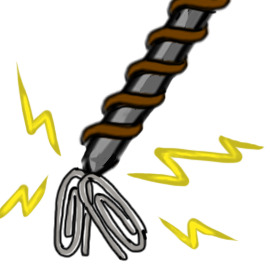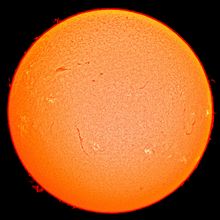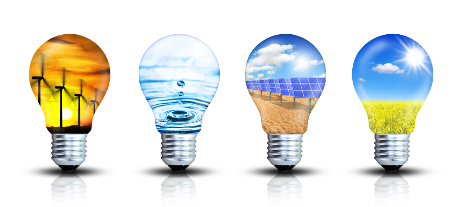In the classical physics observed in everyday life, matter can be defined as any substance that has mass and takes up space, or as any substance made up of atoms, thus excluding other energy phenomena or waves such as light or sound. Observable physical objects are said to be composed of matter. More generally, in (modern) physics, matter is not a fundamental concept because a universal definition of it is elusive: elementary constituents may not take up space per se, and individually-massless particles may be composed to form objects that have mass (even when at rest).
All the everyday objects that we can bump into, touch or squeeze are composed of atoms. This ordinary atomic matter is in turn made up of interacting subatomic particles—usually a nucleus of protons and neutrons, and a cloud of orbiting electrons. Typically, science considers these composite particles matter because they have both rest mass and volume. By contrast, massless particles, such as photons, are not considered matter, because they have neither rest mass nor volume. However, not all particles with rest mass have a classical volume, since fundamental particles such as quarks and leptons (sometimes equated with matter) are considered "point particles" with no effective size or volume. Nevertheless, quarks and leptons together make up "ordinary matter", and their interactions contribute to the effective volume of the composite particles that make up ordinary matter.
Matter exists in states (or phases): the classical solid, liquid, and gas; as well as the more exotic plasma, Bose–Einstein condensates, fermionic condensates, and quark–gluon plasma
*Based on mass, volume, and space:
The common definition of matter is anything that has mass and volume (occupies space). For example, a car would be said to be made of matter, as it has mass and volume (occupies space).
The observation that matter occupies space goes back to antiquity. However, an explanation for why matter occupies space is recent and is argued to be a result of the phenomenon described in the Pauli exclusion principle. Two particular examples where the exclusion principle clearly relates matter to the occupation of space are white dwarf stars and neutron stars, discussed further below.
Solids
The matter that is composed of atoms packed tightly together is known as solids. You cannot walk through a solid wall. The matter is packed so tight that it prevents you from moving through it. Solids hold their shape at room temperature. The pencil that you left on the desk at school will still be the same shape when you return tomorrow.
Even in solids, there is a small space between the atoms. Depending on how tight the atoms are packed determines the density of matter. This means that a one-inch block of wood is not as dense as a one-inch block of gold. There is more space between the atoms of the wood than the atoms of the gold
Liquids
Liquids do not hold their shape at room temperature. There is space between the atoms of a liquid and they move slightly all of the time. This allows you to stick your finger into water and pull it back out, letting the water fill back in where your finger once was. But when walking through the water in the swimming pool, you have to push the water out of the way ‐ this means that you feel the heaviness of the water. Liquids flow or pour and can take on the shape of a container. If the liquid is poured into a wider or narrower container, the liquid will take on that new shape. Liquids are affected by gravity. If you pour only half a cup of milk, the top half of the container would have no milk. Liquids cannot be handed to another person well without the container. Imagine going to a restaurant and asking for lemonade. What if the waiter just put the lemonade into your hands ‐ no glass or cup? Could you lay the lemonade on the table to drink in a few minutes? Even water in a river or a lake has a container ‐ the banks, the bottom, the shore ‐ they form the container.
Gases
Gases not only do not hold their shape at room temperature, they don't even stay put. Gasses are always moving. There is so much space between the atoms in gas that you can move around in them easily. When you walk from one side of the room to the other, you have walked through a bunch of gases that make up our air. You barely even know they are there. Gases will take on the shape of their container and can be compressed into a smaller space. Like when we compress air into a balloon ‐ it fills out the balloon shape. Gases will fill up space too. You don't see only half of the balloon filled with air ‐ the air is not as influenced by gravity as a liquid or a solid would be.





















